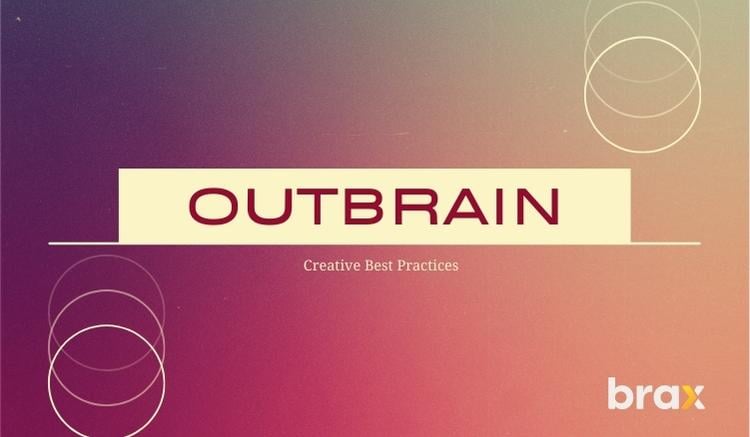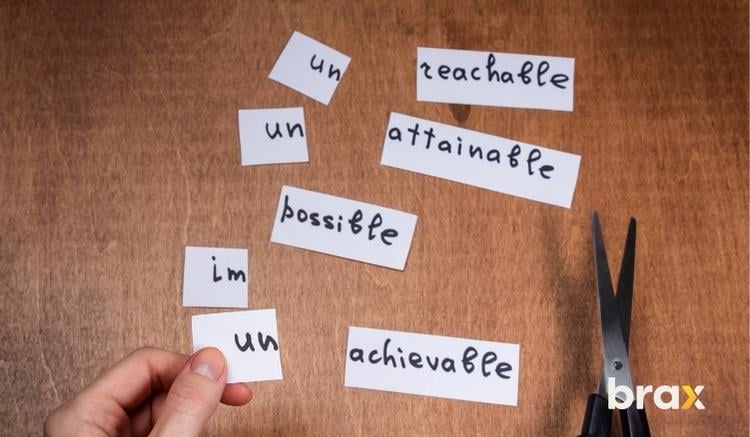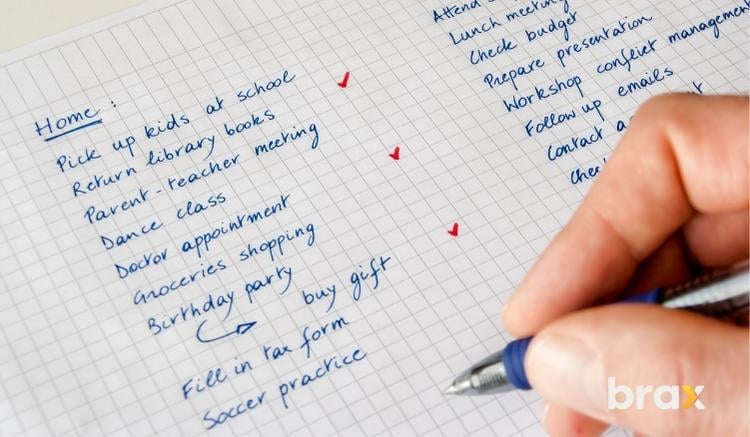A strong creative setup can really make a difference in your success as an advertiser. It is particularly important on platforms like Outbrain where quality content matters.
It´s always a good idea to look at what the platforms require but also what the user connects
with. All these best practices are recommended by the Outbrain team and they have been
proven to work many times over in different industries and businesses.

When we say creatives here, it means a combination of headline and image. This post will be
split into those two parts so you can easily follow along and implement the tactics in your own
accounts.
Let's dive in and explore how you can improve your creatives for maximum results with Outbrain.
Headlines
For the best results, you want to aim at around 60 characters. That will make sure your ads
show up in as many placements as possible without the headline being cut off. If possible, try to strike a balance between persuasion and length. 6 to 12 words should do the trick, in most cases.
Plus, when you launch your campaigns, try to include 3-4 title or headline variations per image.
1. Use Listicles
Headlines with lists are quite popular for bloggers and content creators. You might think they are overused. The reason they´re so used is they flat-out work.
The theory is that listicles fuel curiosity and get people to this “I wonder what number 2 or 3 is”
kind of feeling. Also, when we see a list, we automatically get an idea of how much content or
value we´ll see from the start.
If you want to take your listicle headline to the next level, use odd numbers. They tend to work
better. This blog post is a perfect example.
Instead of writing… “Simple Tips To Travel In Style This Summer”
Try… “15 Simple Tips To Travel In Style This Summer”
A pro tip is to add something that generates even more curiosity. For example: “15 Tips To
Travel In Style This Summer (You´ll Love Number 9)”
2. Ask Questions
Questions are powerful because they help you drive engagement.
In essence, the more engagement, the less you´ll pay per click and the more impressions your ads will get. You can use close-ended or open-ended questions. My advice is always to test and see which works better for you.
Some examples of words you can start your headline with are “how”, “what”, “which”, “do” or
“are.”
So, instead of writing… “Best Running Shoes For Women”
Try… “Which Of These Are The Best Running Shoes For Women?”
As a side note, the word “these” has been proven to be very effective in advertising for ages.
You can combine it with other best practices described in this post for even better engagement.
3. Try Negative Words
Outbrain´s vast internal data confirms that words such as “never” or “worst” tend to perform
better than more positive words. This isn´t a surprise, since the human mind is unconsciously
attracted to negativity more than positivity. All you have to do is turn on the news today and see for yourself.
We tend to remember negative experiences more than positive ones.
Simply, instead of writing… “The Best ETFs To Invest In Right Now”
Try… “The Worst ETFs To Invest In Right Now”
Remember that human beings will go further in trying to avoid a mistake or bad decision than
they will to experience pleasure. Tap into it with your headlines.

4. Call Out Your Avatar
This one is a classic copywriting technique. It works as a filter, allowing you to attract the attention of the exact audience you want to reach. It´s a lot easier to do the “callout” at the
beginning of your headline. You can also have it in the middle or end of the headline, it just
takes a bit more creativity.
Instead of just writing… “3 Amazing Golf Tips From A World Champion”
Write… “Weekend Golfer: 3 Amazing Tips From A World Champion”
For the avatar callout, try to stick to two words maximum. Headlines should be as short as
possible and as punchier as possible. For example, Toddler Moms instead of 3-Year-Old Moms.
5. Test Dynamic Text
For local businesses, this is a must. This can be very successful for any business though. If you´re not familiar with dynamic text insertion, let me explain.
Outbrain gives you short snippets that can dynamically be populated with user location or even day of the week. When you put ${city}$ on a headline, for example, that snippet will be replaced with the users´ location.
Instead of writing… “Homeowners Are Going Crazy About These New Showers”
Try… “${city}$ Homeowners Are Going Crazy About These New Showers”
So, when your ad shows up for users in Miami, for example, it will look like this… “Miami
Homeowners Are Going Crazy About These New Showers”
This is a tactic that can literally work like crazy. Because you´re being specific, people will tend to resonate better with the ad. You´ll often find these ads with dynamic text generating higher click-through rates and lower cost per click.
Images
Smashing your KPIs on Outbrain isn´t just about having great headlines. You also need
attention-grabbing images. There are a few simple best practices that will keep you out of
trouble.
The best piece of advice when it comes to images is to maintain congruence. So, whatever you say in the headline should match your image. In other words, the whole ad needs to make sense in the user´s mind. For example, if your headline is about debt relief but your image shows a dog, that´s called incongruence. Don´t do this.
Also, images should have dimensions of 1200x800 and be high-quality. Similar to headlines, try to include 3-4 image variations on your campaign. BeFunky offers an incredible array of tools to enhance your photos, create and customize your photo collage. Change the background color, add an elegant pattern, or tell a story with text in an eye-catching font.
6. Avoid Text Overlays
A lot of advertisers try to be clever by adding text to their images. It might work on Facebook but you should avoid it at all costs on native placements. Clean images without text that match the look and feel of the publishers, will almost always work better.
If your headline is good enough, you don´t need text in the image anyway. So why have the
extra work of editing images to get the worst results?
7. Try Close Up Shots
The highest performing images are close-up shots, where you can clearly see the subject. They fill up a bigger percentage of the image frame compared to long-distance shots, which draws more attention.
Also, avoid action photos. In other words, images that show someone or something in action.
Try to choose images that showcase stillness. It acts sort of as a soft pattern interrupts within
publishers´ websites.

8. Use Lifestyle Images
Images that represent the day-to-day of your customer avatar typically perform better on
Outbrain. You can test graphics, however, just be aware that these will look more like ads than
content to the users, which is a bit against the nature of native ads.
Sometimes, advertisers tend to use flashy graphics in an attempt to grab more attention. In
most cases, they get the exact opposite. You want to create attention-grabbing content, not ads.
9. Add Product Images
Sounds simple, doesn´t it? It is and because of that, most Outbrain advertisers miss it. While
clean lifestyle images are the norm, you shouldn´t steer away from product images.
If your headline starts with the product, you should definitely have a product image to maintain
congruence.
The rule of thumb here is to use product images for product-driven headlines and lifestyle
images for everything else, being problem-driven or solution-driven headlines.
Here´s an example of all of these:
● Problem headline: “Do You Know The Early Warning Signs Of Job Burnout?”
● Solution headline: “14 Simple Ways To Get Rid Of Acne For Good”
● Product headline: “How This New Camera Is Changing Close-Ups Forever”
Your Steps To Outbrain Creative Success
Many advertisers think that if they just test hard enough, someday, they´ll hit the jackpot. That
might be true in the lottery but will not serve you long-term on native. Here´s why.
If you have lousy headlines with weird graphics, it doesn´t matter how much you test, you won't be driving the best results possible because you´re starting from a weak foundation.
Testing aimlessly without a clear action plan and awareness will almost always fail.
You have to get the fundamentals right first. Then, you can get creative and test other things to improve performance further. Think of these best practices as your house´s foundations. With them, you´ll have a better chance of weathering the storm and coming out on top.
If you liked this best practices article, you might also like these:


